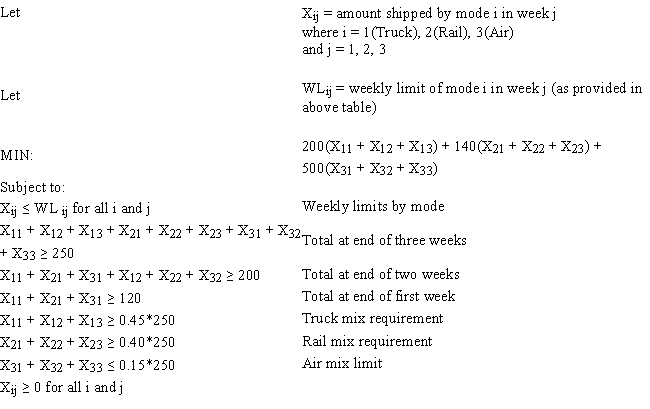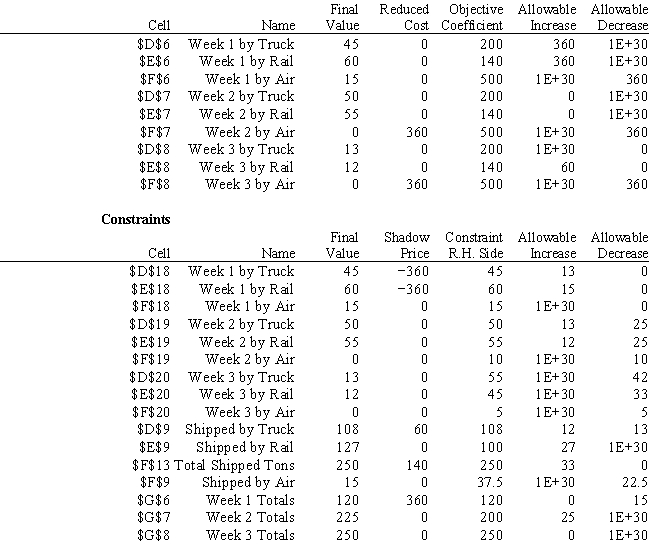Exhibit 4.1
The following questions are based on the problem below and accompanying Analytic Solver Platform sensitivity report.
Carlton construction is supplying building materials for a new mall construction project in Kansas. Their contract calls for a total of 250,000 tons of material to be delivered over a three-week period. Carlton's supply depot has access to three modes of transportation: a trucking fleet, railway delivery, and air cargo transport. Their contract calls for 120,000 tons delivered by the end of week one, 80% of the total delivered by the end of week two, and the entire amount delivered by the end of week three. Contracts in place with the transportation companies call for at least 45% of the total delivered be delivered by trucking, at least 40% of the total delivered be delivered by railway, and up to 15% of the total delivered be delivered by air cargo. Unfortunately, competing demands limit the availability of each mode of transportation each of the three weeks to the following levels (all in thousands of tons):  The following is the LP model for this logistics problem.
The following is the LP model for this logistics problem. 

-Refer to Exhibit 4.1. The Week 1 by Truck and Week 1 by Rail constraints each have a shadow price of −360. What do these values imply?
Definitions:
Antitrust Amendments Act
Refers to legislative changes aimed at strengthening laws that regulate business practices to ensure fair competition and prevent monopolies.
Price Discrimination
The practice of selling the same product or service at different prices to different buyers, without a justified cost basis for the price variation.
Bankruptcy
Bankruptcy is a legal process through which individuals or businesses unable to meet their financial obligations can seek relief from some or all of their debts.
Statutory Defense
A defense based on specific statutes or laws that can provide immunity or exoneration to the defendant.
Q5: A company is developing its weekly production
Q15: The following linear programming problem has been
Q22: Draw the network representation of the following
Q22: Which of the following is most likely
Q30: The objective function coefficients represent per unit
Q34: Microsoft Excel contains a built-in optimizer called<br>A)
Q60: A manager should consider how sensitive the
Q74: The second step in formulating a linear
Q92: Refer to Exhibit 3.2. Which of the
Q177: The slope of the typical production possibilities